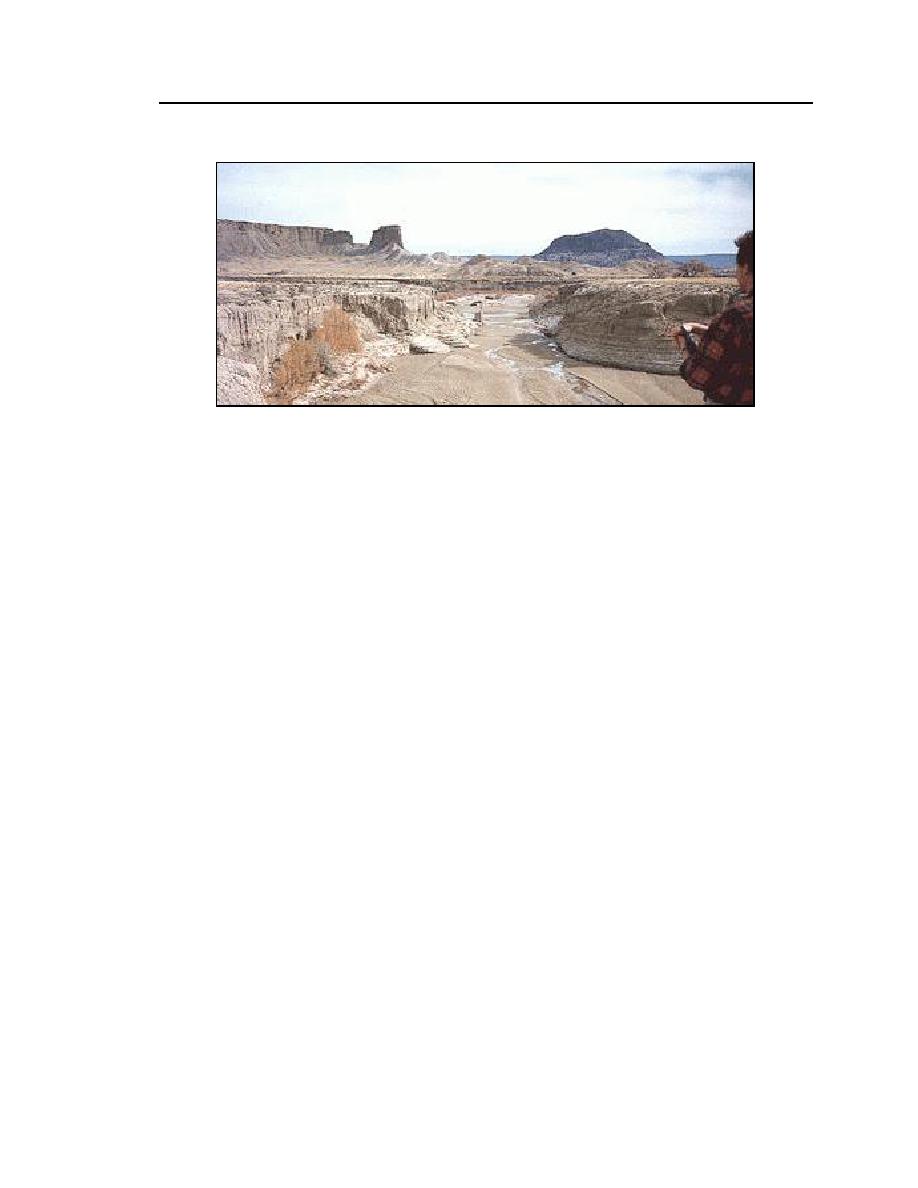
Chapter 3. Geomorphology
57
Figure 15. Arroyo Chico in the Rio Puerco Watershed, New Mexico, show-
ing entrenched vertical walls typical of arroyos. (From http://rocky
web.cr.usgs.gov/html/puerco/chico.html.)
resulting in aggradation. Aggradation can continue until the incised channel is
completely backfilled and the valley floor has no well-defined channel, a
condition that existed in the southwestern United States prior to 1850 (Leopold
and Miller 1956). Exposures along existing arroyo walls contain evidence that
arroyo cutting and subsequent filling has occurred several times throughout the
Holocene (Waters and Haynes 2001). Incision of arroyos occurs relatively
rapidly (a few years to decades), while subsequent backfilling is a much slower
process (several decades to centuries). While some have linked arroyo formation
to climate change (Bryan 1941, Balling and Wells 1990, Waters and Haynes
2001) and human land use (Antevs 1952, Graf 1983a, Bull 1997), arroyos can
also occur endogenetically (Andres 1980) as localized oversteepening of aggra-
dational reaches occurs during the natural evolution of a discontinuous ephemeral
stream system under steady hydrological conditions (Patton and Schumm 1975).
While a discontinuous ephemeral stream system as a whole might be
considered to be in equilibrium if the amount of channelized area relative to
sheetflood zones remains constant over time, a single point along the system
never reaches a steady state. Channel morphology will constantly be in flux, even
if headcuts and sheetflood zones are migrating headward at the same rate to
maintain equilibrium. Dramatic temporal and spatial changes in channel mor-
phology should be considered the norm, rather than the exception, on
discontinuous ephemeral stream systems.



 Previous Page
Previous Page
